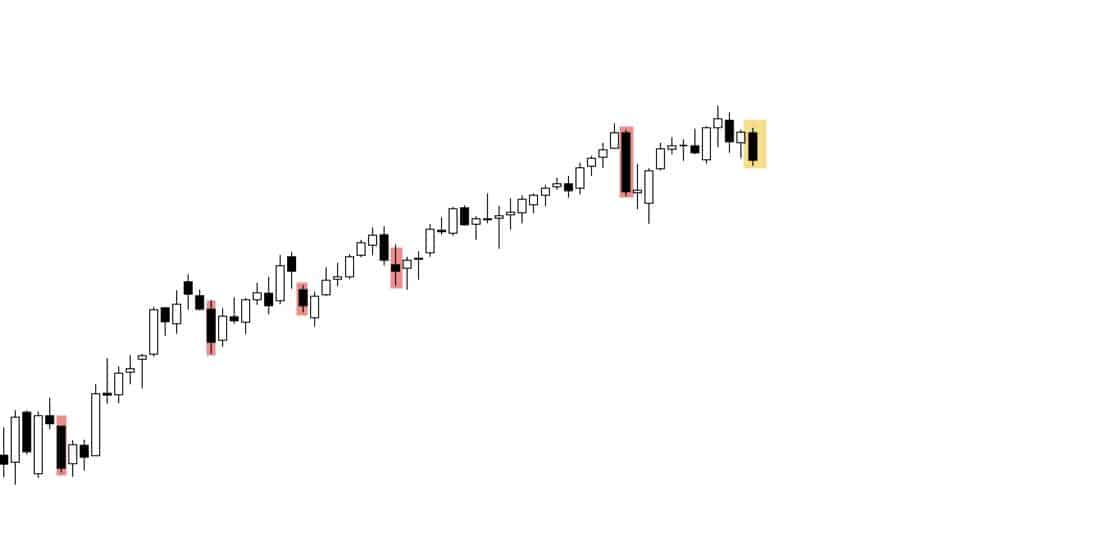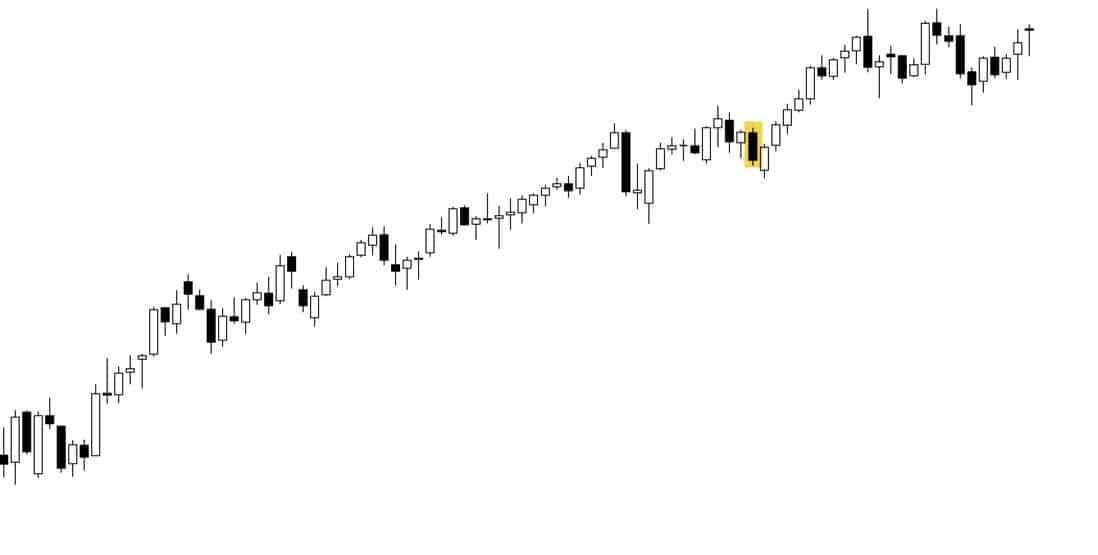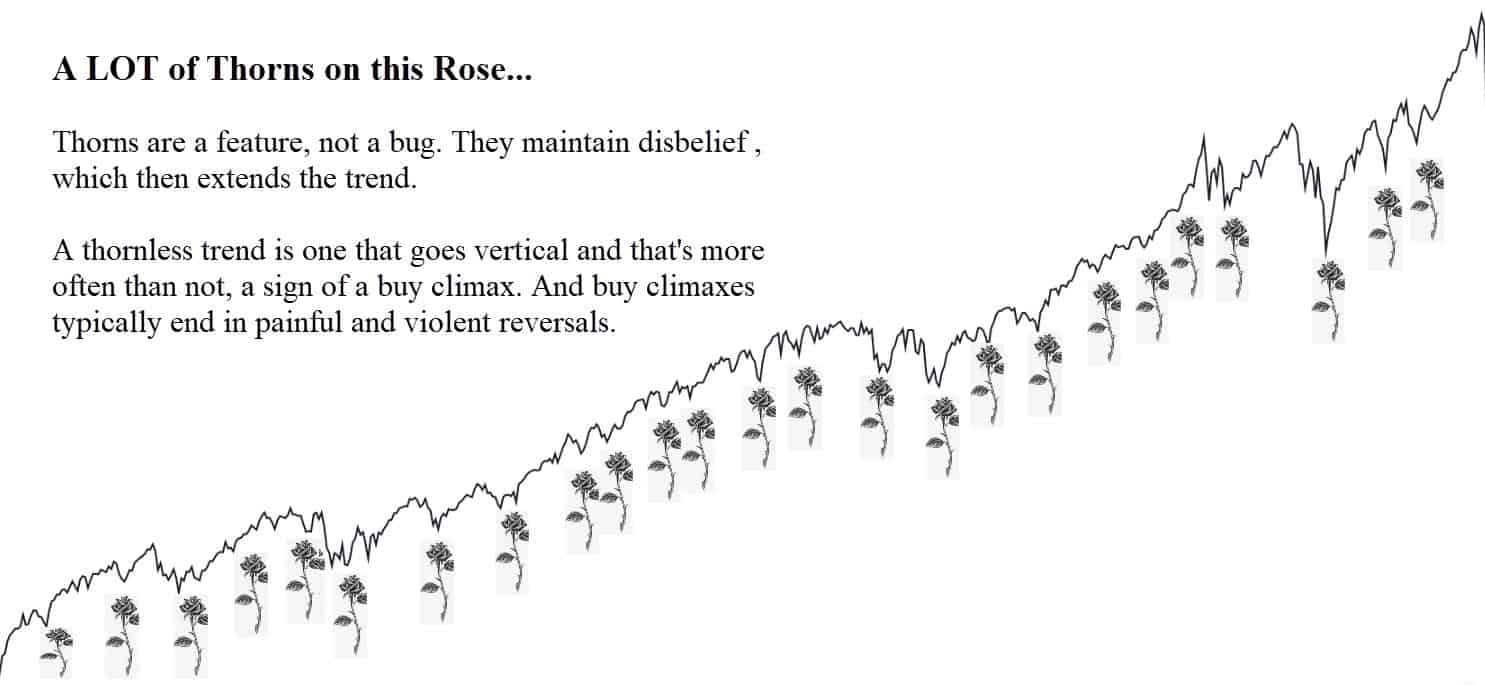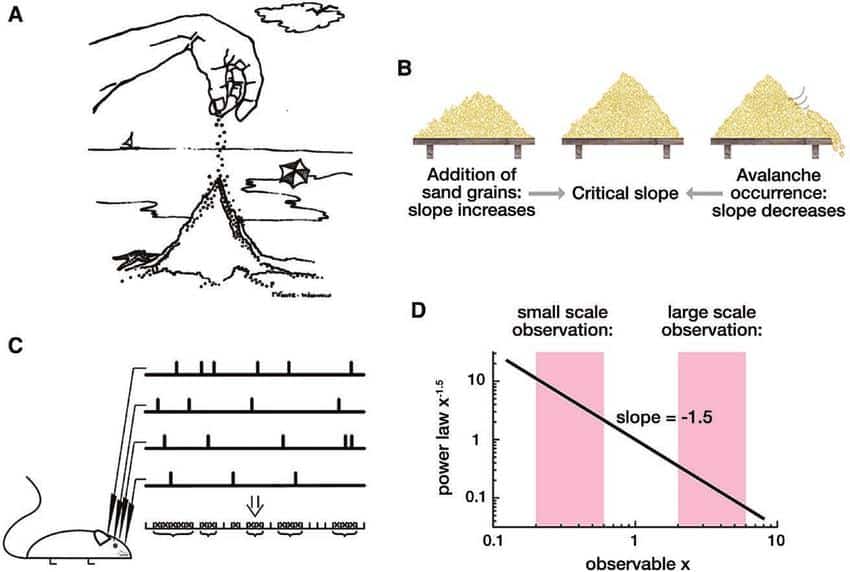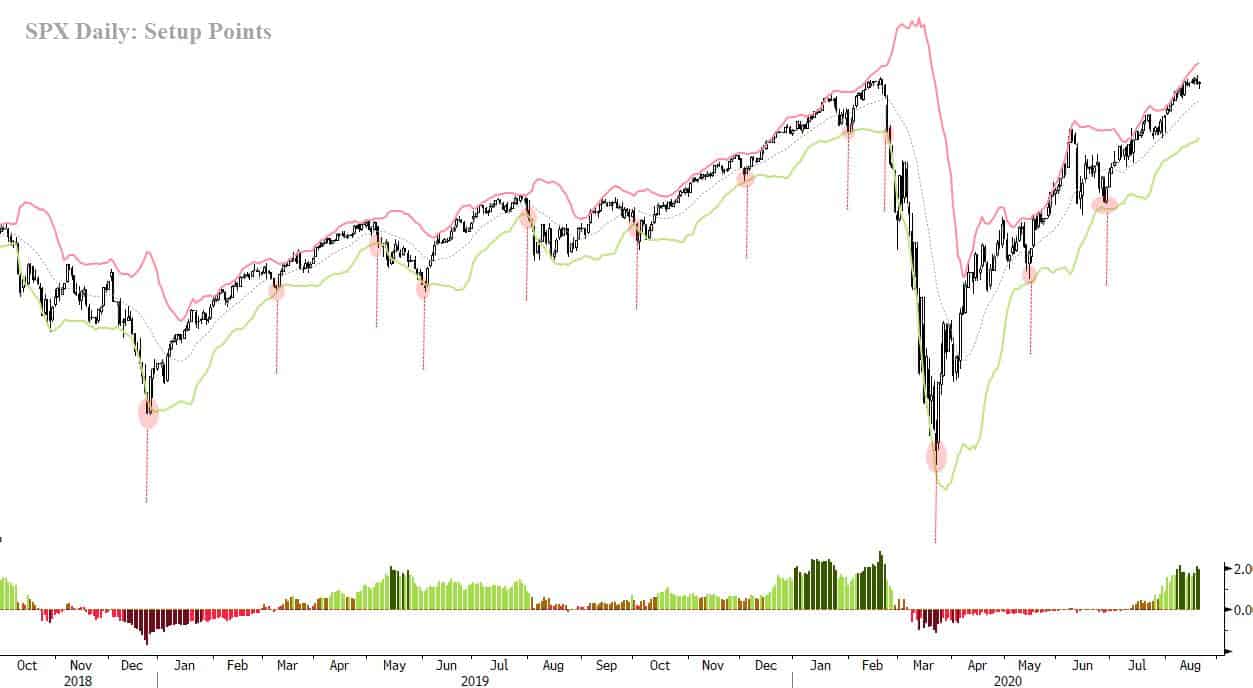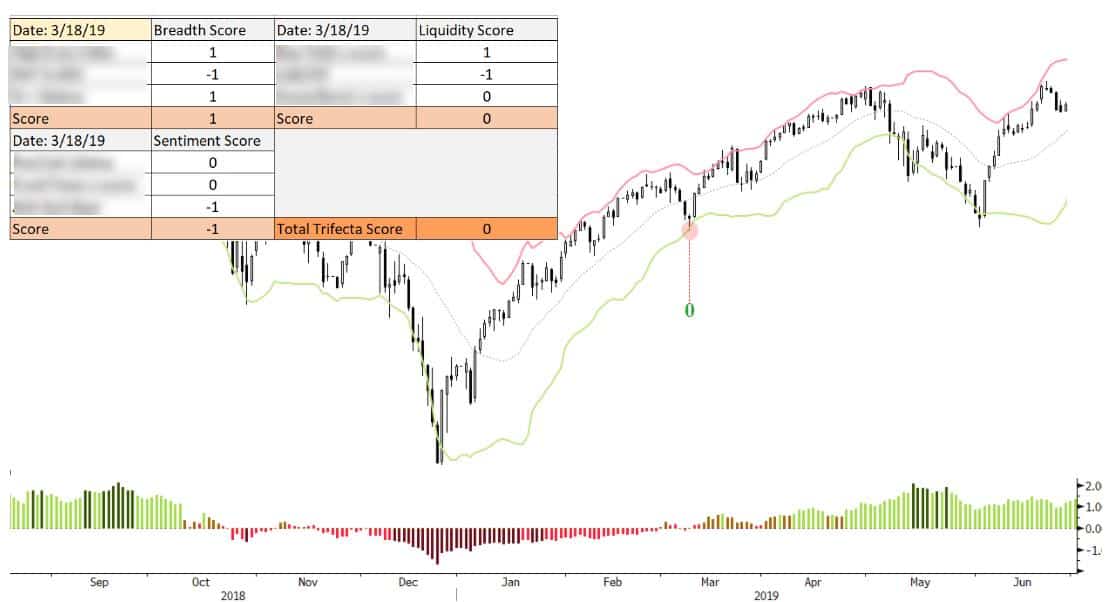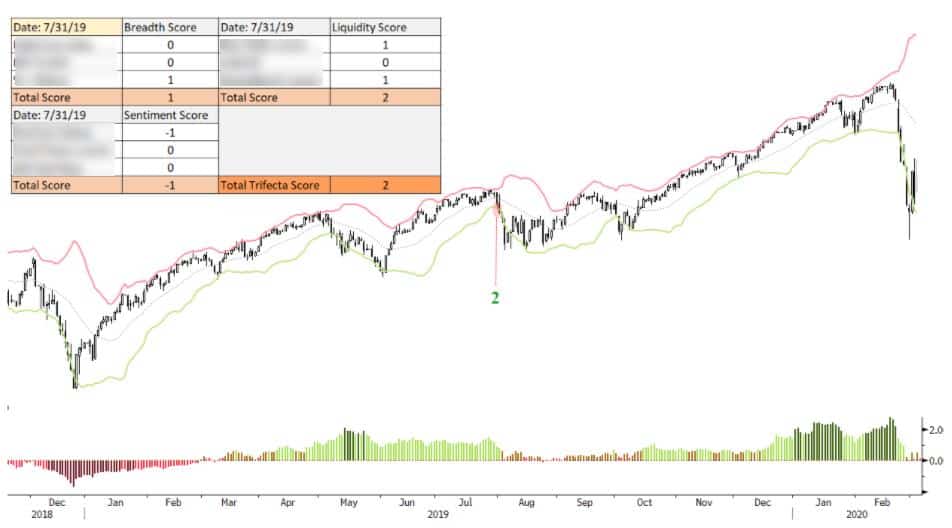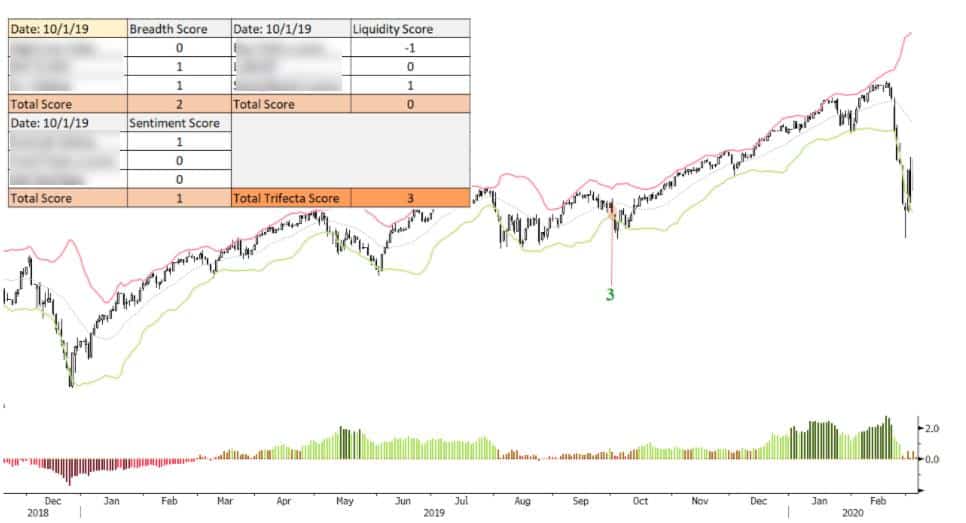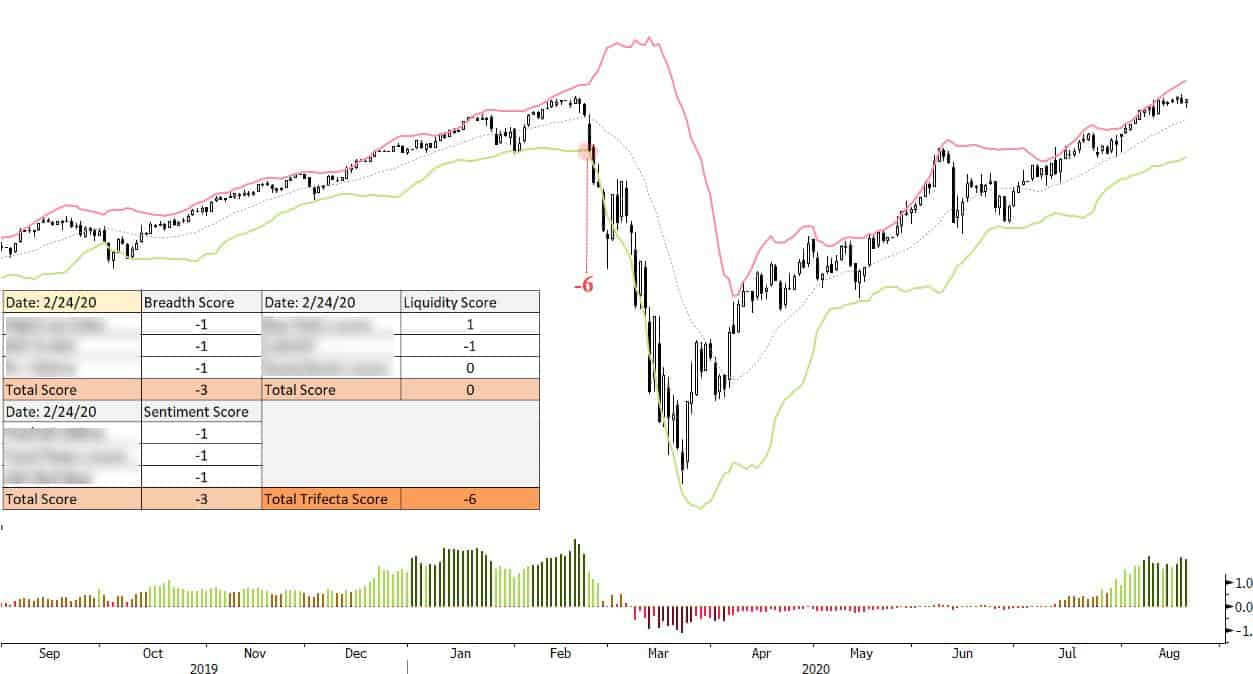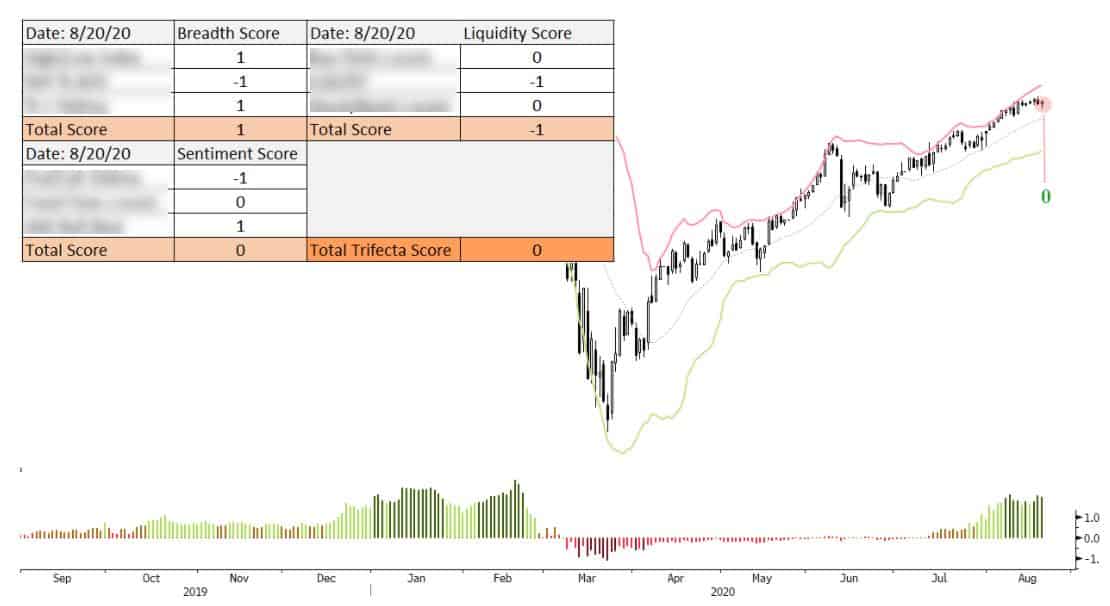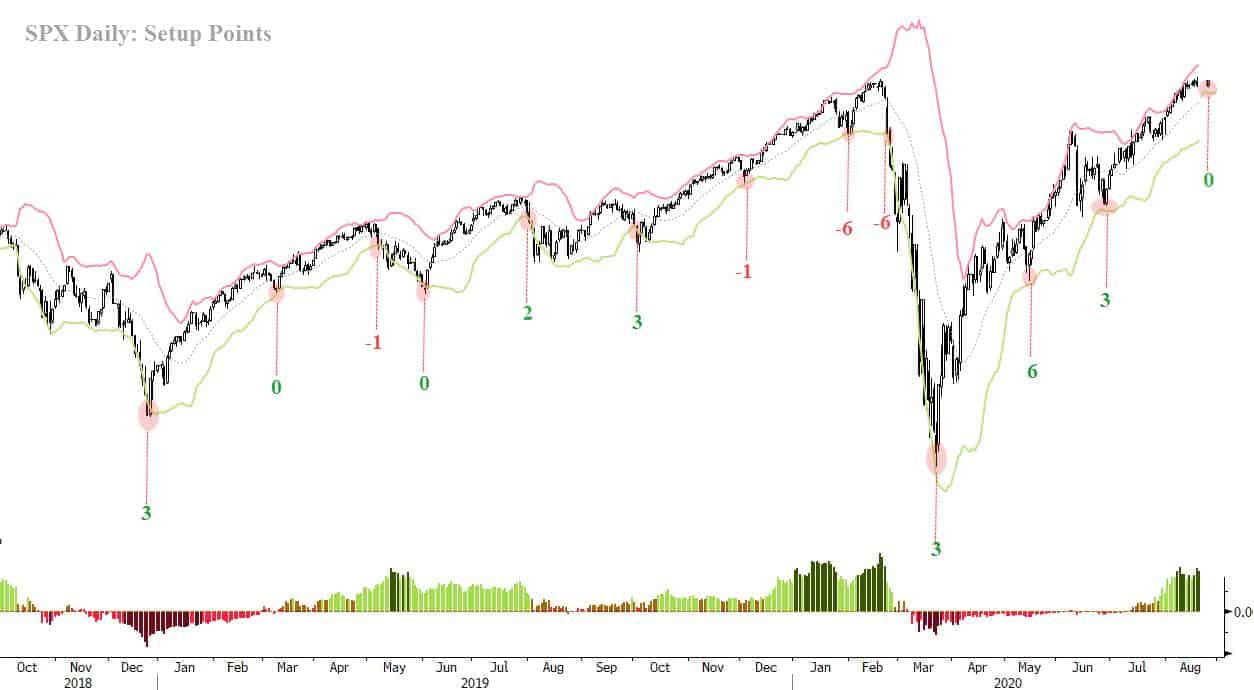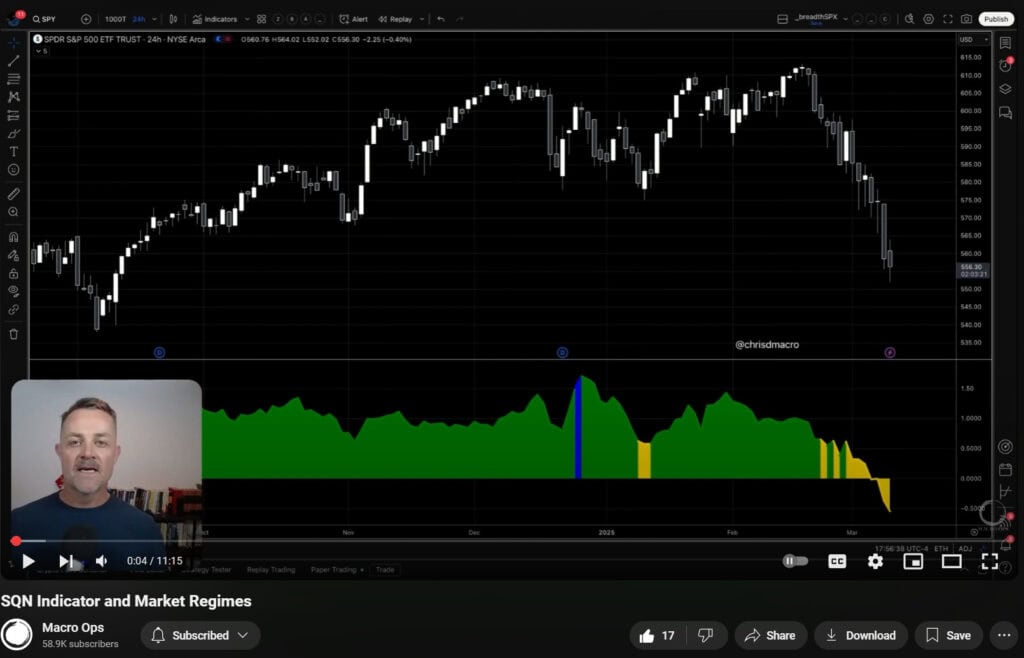The following is an excerpt from a monthly report that goes out to members of our Collective. Some of the details are redacted but my hope is that this report helps you look at trends and dips — or what we can thorns — in a new light and as a result, you can avoid getting treed by a chihuahua… That’ll make more sense to you in a moment. Enjoy…
“Well over half the men who started the course with me many weeks earlier were now gone. At the beginning of this, the final test of the course, we were told to pack a rucksack that weighed at least seventy pounds and prepare for a long-distance movement through the Appalachian Mountains. There was no guidance on how long the movement would be or how long we would be given to complete it. For me, Stress Phase started at 2:30 A.M. when, in total darkness, I was dropped on a dirt trail in the middle of the mountains (aka nowhere). A Delta cadre member handed me a piece of paper with map coordinates on it and told me to “Find my way to the next rendezvous point (RV), and take all instructions from the cadre.” And, oh, yeah, “Don’t be late, and don’t be light.”
This is former Delta Force Commander Peter Blaber recounting in his book “My Mission, My Men, and Me” his experience during the Delta Force’s grueling final phase of its selection process, appropriately called the “Stress Phase”.
About 15-hours into the maneuver Blaber was exhausted, near delirious, and not quite sure of his bearing after fighting his way through the thick vine-webbed underbrush of the Appalachian mountains. Needing to orient himself, he decided to make his way up a tree to see if he could spot the ridgeline that located his final rendezvous point. This was a bad idea.
Blaber was so discombobulated he forgot to take off his 70Ib ruck before the climb up. As soon as he reached the top and was about to survey his surroundings, the thin branch supporting him and his gear gave way and Blaber plummeted head over heels to the ground.
He likely would have broken his neck had it not been for the arresting force of the vines that had been tormenting him throughout the mission. This was lucky. Unfortunately… this luck was short-lived. As soon as Blaber finished checking in with himself to make sure he didn’t break any bones, he heard a noise.
I turned like an arthritic old man, head and upper torso as one. With the peripheral vision of one eye, I spotted a tiny black animal scurry out from under my ruck. How cool—a baby bear! Then my spider senses kicked in. Fifty or so feet to my rear, I heard the spastic scream of an enraged animal. It was violently thrashing the vines, and it was getting closer. Turbocharged by a heavy dose of fight-or-flight adrenaline, in one fluid motion I jumped up and bolted. What kind of screwed-up luck is this? Instead of finding my way out of the vines, I wandered into the middle of a black bear’s den—and now I’m gonna get my ass torn apart.
Blaber took off like a banshee out of hell but the sounds of the bear only grew closer. Knowing full well he had zero chance of outrunning a pissed off momma bear, he made a split-second decision. He came upon a cliff that led to a steep slope that ran for a couple hundred feet or so. Running at full bore, he jumped.
It was a magnificent leap, one I could likely never replicate without the motivational stimulus of an angry black bear on my heels. I landed on the slope precisely as I had hoped, at an angle, and feet first. But instead of rolling, my strength-sapped body betrayed me once again. I crumbled like a beanbag and immediately transitioned into a cartwheeling carcass. Arms and legs flailing violently, I rolled end over end. After a couple of hundred feet, I plowed into a medium-sized walnut tree and came to an abrupt stop. Once again, I conducted a quick survey of my limbs. Everything still worked. What about the bear? I wondered while maintaining statuelike stillness.
Using the tree as a pivot, I pushed myself up on my knees and slowly scanned upward toward the edge of the cliff. There, slightly occluded by the bramble bush I had so magnificently launched myself over, was baby and mother searching the hillside for my carcass. As so often happens when you stare and focus directly at another living being, the mother abruptly snapped her head in my direction and locked eyes with mine. To my simultaneous horror and shame, I discovered that she—was a pig!
Not a bear, or even a wild boar, but a freaking pig! Dirty and disgusting, it had likely escaped from a local farm. I had run for my life, and jumped off a cliff, all because I had jumped to the conclusion that my life was endangered by a nonexistent bear.
Blaber had flung himself over a cliff in full kit and cartwheeled for a couple hundred feet because he was getting chased down by a staple of American breakfast. To further salt the wound, he realized he’d also lost his map and flashlight in the tumble.
He was now completely lost, without map or light, as bone-weary as ever, and with just a few hours left to make rendezvous. Failure of which would make the last few months of suffering all for not. And… he had all of this to thank for his mistaking Mrs. Piggy for an angry black bear.
Fortunately, Blaber made it to his destination by the very skin of his teeth. And he went on to become a decorated Delta Force Commander.
He attributes much of his follow-on success to an important lesson learned that fateful night. A lesson he now refers to as “Don’t Get Treed By A Chihuahua”.
Blaber writes:
It’s been said that there are no mistakes in life, only lessons. Every mistake is an opportunity to ensure that we never make it again, especially when future consequences can be much more dire. When I saw the little black creature through the corner of my eye, my tired and frustrated mind took a shortcut. I decided it must have been a baby bear with a mother not too far behind. When I heard the spastic scream of the animal in the bushes, I decided it had to be the vicious growl of a mother bear instead of what it actually was—the vicious oink of a mother pig.
My contextless response was to run for my life and jump off a cliff; I got treed by a chihuahua. Getting treed by a chihuahua is a metaphor for making decisions without context. Context is the reality of the situation around us. Without context, our minds have a tendency to take shortcuts and recognize patterns that aren’t really there; we connect the dots without collecting the dots first. Overreacting, underreacting, and failing to do anything at all are all symptoms of “getting treed.”
Investors get treed by purse-sized yappy dogs, day in and day out. They make decisions without effective context before they’ve collected the dots. They mistake pigs for bears, minor dips for major crashes, and market tops for great buying opportunities.
Like Blaber on the final night of Stress Phase, they make biased decisions from points of emotion such as fear and greed. As a result, they have a tendency to recognize patterns that aren’t really there.
This is a function of our cognitive wiring.
The brain is an amazing piece of hardware. It is comprised of roughly 90 billion nerve cells which are linked together by trillions of synapses. It is estimated that the human brain operates at approximately 1 exaFLOP. That’s equivalent to a billion-billion calculations per second, multiples faster than what the largest supercomputer can accomplish over any meaningful period of time.
But all this processing power takes up a lot of energy — a bit over 20% of the body’s total usage — making it by far the most energy-intensive organ.
Because of these large energy needs, the brain has evolved like the rest of the human body for maximum efficiency. After all, the primary driver of evolution is survivability, and energy sources (food), used to be scarce. So the human body evolved to balance a brain that can solve complex tasks — helping us move to the top of the food chain — with a need to efficiently use the body’s energy.
As a result, we got a brain that’s awesome, but also lazy.
It uses a host of cognitive tools (ie, heuristics, biases, anchoring, etc.) as a way to jump to conclusions without expending too much energy consciously thinking through every single problem it’s faced with.
For the most part, this system works great. The brain is unmatched in its ability to subconsciously perform pattern recognition and come to an adequate conclusion with little information.
For the many advantages that our brains offer though, they can be extremely dangerous to our trading capital.
That’s due to the following two reasons:
-
- Our brains operate on pattern recognition and therefore like simple, linear answers.
- Information overload results in cognitive tunneling (System 1 thinking) and our minds instinctively follow the path of least resistance when confronted with complexity.
The problem with “reason 1” is that markets are not simple or linear. They are endlessly complex and dynamic.
Therefore “reason 2”, following the path of least resistance in coming to conclusions, is the opposite of what you should be doing.
But it doesn’t need to be like this. As Blaber learned, there’s a way to overcome this evolutionary handicap. He writes:
So how could I have known it wasn’t a bear? Because there was another, more enlightening pattern tugging at the shirttails of my common sense as I fled that day. It was the pattern of being treed by a chihuahua—all those times in my life when I had made chowderheaded decisions without understanding the reality of the situation around me. My common sense was telling me to take time to look, listen, and question everything. Common sense provides context, and context is common sense.
In this report, we’re going to layout a three-part-framework for establishing context in markets.
The framework will keep you from getting knocked out by every minor dip in a major trend. It will help you know when it’s time to take profits and reverse your positioning. It’s the framework we used to flatten our longs, buy a bunch of bonds, and go short the market in late February before the crash. It’s the one I used to start adding some risk again shortly after the March 23rd bottom.
Is it this or is it that?
Price action is fractal. There’s trends, counter-trends, and consolidations contained within every chart. This simply means that within every trend, like the one below, there are reversals and consolidations simultaneously taking place on various timeframes.
The difficulty in sitting tight and riding a trend out is when you get these little dips (highlighted candles). You don’t know whether they’re going to do this.
Or this…
Most investors sit on the sidelines for the meat of a trend. They console themselves with ALL the reasons why the trend will end, and they expect every dip to be the BIG one.
By necessity, it has to be this way. Trends are built on disbelief. They climb a wall of worry and fall down the stairs of hope. It’s the conversion of non-believers to full-on punch drinkers that eventually mark the major turning points.
The oscillations, the dips, the volatility along the way are the price the player pays to ride out a big move.
I can’t remember who made the analogy (Ed Seykota, maybe?). But they compared a trend to a rose. To hold a rose you have put up with the thorns. Most traders think the thorns are poison-tipped and quickly drop it like it’s a turd covered stick.
Experienced traders know that a thorn is an opportunity to enter or add to a position…
Thorns are a feature, not a bug.
They perpetuate the disbelief in the trend and keep positioning and sentiment from reaching a point of criticality that translates into trend fragility and raises the specter of a full-blown phase-shift (reversal). This is true for all complex systems as pointed out in this piece from Quanta Magazine.
A complex system that hovers between “boring randomness and boring regularity” is surprisingly stable overall, said Olaf Sporns, a cognitive neuroscientist at Indiana University. “Boring is bad,” he said, at least for a critical system. In fact, “if you try to avoid ever sparking an avalanche, eventually when one does occur, it is likely to be really large,” said Raissa D’Souza, a complex systems scientist at the University of California, Davis, who simulated just such a generic system last year. “If you spark avalanches all the time, you’ve used up all the fuel, so to speak, and so there is no opportunity for large avalanches.”
In markets, frequent dips help prevent major selloffs and effectively lengthen the duration of a given trend. Knowing this, as traders and investors, our process needs to exploit and harvest the positive function of dips (thorns) and not let them shake us out of positions. That’s what the following framework aims to do.
The Trifecta Lens is a 3-part decision tree that operates off of simple {if this, then that} conditional statements. The aim of which is to quantify our key indicators of breadth, liquidity, and sentiment in order to give us objective points of context. The result of which is it tells us whether a dip is a this or a that.
It looks like this:
-
- Setup
- Conditions
- Trigger
The tipping point into multiplicity
A Setup is a technical point on a chart. In physics terms, it would be called the critical point, which is the zone at which a complex system sits between order and disorder. The area at which a phase transition can take place.
In our framework, the Setup is when the price touches the lower band of a standard 20-day 2stdev Bollinger Band in an uptrend. But, in reality, it could be a number of things, such as a Keltner or Donchian Channel break, a swing below a pivot point, a percentage move off new highs, etc…
The exact details are fairly unimportant and you can use something else that better fits your process and objectives. The key is that it’s a critical point that shouldn’t be too frequently hit because you’ll end up with a lot of noise.
Many investors worry about a large selloff when the market is hitting new highs, which just boggles the mind because new highs are an obvious trait of a bull trend. A bull trend contains many oscillations that vary in amplitude. Again, these are thorns and they’re a good thing.
We don’t care about dips to the middle range of the band, because those are noisy and are more often than not, a buying opportunity — remember Newton’s First Law of Markets, a trend in motion tends to stay in motion — statistically speaking, a trend will continue 80% of the time.
A larger selloff is what we’re concerned with and it has to pass through the lower Bollinger Band. I know I’m making some obvious statements here, but bear with me as I build on the logic behind the framework.
So, it’s only when the price hits the lower Bollinger Band in an uptrend that we need to follow through on the rest of our framework. In order to see if it’s a this or a that… a dip or a potential crash…Otherwise, we should buy new highs; buy reversals after dips to the midline, buy because we have too much cash, buy because it’s sunny out, etc…
A measure of potentiality
If our Setup is a measure of frequency then Conditions are a measure of the potential amplitude or the overall fragility of the trend at that point in time. They give the probabilities for a phase-shift, a reversal of trend.
To use the sandpile analogy, we can think of Conditions as a measure of slope. The steeper the slope the greater the potential for an avalanche.
We measure Conditions through a Trifecta of Breadth, Liquidity, and Sentiment. There is no panacea or perfect indicator in markets. It can’t exist because if there was it would be arbed out and reflexivity would kill its value as a signal. Using the Trifecta approach of collecting data points from disparate areas of the market, we can holistically build out a more effective context.
So let’s walk through each one.
The strength of the line
A good way to think of market breadth is like an advancing military force. Strong breadth is similar to an army with a deep and disciplined line (think of old school battles where fighters stood shoulder to shoulder). That line has strength and weight behind it. It can move and push through barriers.
On the other hand, when the line is thin and begins to fracture. It doesn’t take much from the opposing force to break it completely. This is how major trend changes happen. Each issue in an index is equivalent to a soldier standing on that line. And that is what various indicators of breadth aim to measure.
The three breadth indicators used in our Trifecta Lens are: [Details have been redacted and are for Collective members only].
The conditional statements used for each one is:
We add these together to get a Breadth score. The score ranges between -3 and +3 with -3 indicating very negative breadth and +3, the opposite.
The strength of the current
Liquidity can be thought of as the trend in demand for risk. It’s best measured by tracking what’s going on in the credit markets. Since, as per our Hierarchy of Markets framework, credit markets are smarter than equity markets and more often than not, sniff out major trend changes before they show up in stock indices.
The three liquidity indicators used in our Trifecta Lens are:
The conditional statements used for each one is:
The yin and yang
Exuberant sentiment and crowded positioning are behind nearly every major market selloff. Overly eager investors out over their skis are what sows the seeds for a reversal in trend. It’s what drives the fractal risk-cycle and why there’s an embedded yin & yang flow to markets. You can read more about how we think about sentiment here.
The three sentiment indicators used in our Trifecta Lens are:
The conditional statements used for each one is:
We add the Breadth, Liquidity, and Sentiment scores together once a Setup point has been observed. The cumulative points give us a final score which ranges from -9 to +9.
The tape tells all…
A Trigger is a setup bar that leads to an action; an entry, exit, add to, or reduction of a position. We’re not going to dive too much into this concept today. We’ll leave that for another time. But essentially, it’s an additional and critical contextual point that precedes a trading action.
For instance, it could be a strong bullish reversal bar after a Setup is hit in a bull trend when the Conditions signal a high probability of trend continuation. And vice-versa, it could be a bearish follow-through after a Setup point is hit, indicating a high probability of further downside over the short-term, at minimum.
Putting it all together
Let’s now go through 12 Setups over the last 18-months and see how this framework would have kept you in the trends and out of the crashes.
Beginning at the bottom of the December 2018 selloff when everyone was talking about recession, the inverted yield curve, and trouble in China.
The Trifecta Lens gave us a score of +3. Any score from zero and above is bullish, so a positive three is a very strong reading. This reading was followed the next day by a large bullish reversal Trigger bar.
In March 2019, when everyone was calling the rise off the lows a bear market rally and pointing to indicators of a global recession. Our Trifecta Lens gave us a score of 0 on the March 18th Setup.
Again, this is a bullish score and it was followed the next day by a bullish reversal Trigger bar.
Nearly two months later we got another setup. The narrative was the same: inverted yield curve, China recession, liquidity issues, yadda… yadda… yadda…. On the May 7th Setup, we got a reading of -1.
This is a bearish reading indicating there’s a higher chance of downside follow-through — which is exactly what we saw. But it’s not an extremely bearish reading, one that would normally precede a major selloff or change of trend. Those typically occur at -3 or below.
Four weeks later, the selloff concluded with a reading of 0 followed by a large bullish reversal Trigger bar.
Towards the end of July, the whole Repo Rate Hysteria began kicking up, feeding the bearish machine.
This, of course, was a bunch of nonsense. Anybody who knew even a little bit about how the financial plumbing works, should have known that. Regardless, it didn’t matter, because the Trifecta Lens would have told you to stay long the trend.
In the July 31st Setup, we got a reading of positive 2. There wasn’t an immediate bullish follow-on Trigger bar, but it at least told you that the odds favored a minor pullback over the bear market everyone was predicting.
All you had to do was stay long and wait for a bullish Trigger to enter or add to your position.
October 2019 was peak Repo Hysteria… We got a Setup on the first of the month and a very bullish reading of positive 3. Again, all you had to do was wait for a bullish reversal and buy/add to longs.
In December of that year, our bullish tailwinds began to dissipate somewhat. And on our December 3rd Setup, we got a reading of negative 1.
A reading of negative 1 doesn’t mean there’s a high probability of a major trend change. It just means fragility has increased and Setups can turn into deeper pullbacks. That wasn’t the case here as this was quickly followed by a bullish Trigger bar. So again, you wanted to stay long and add to your positions.
The trend-fragility increased though… And nearly 2-months later, when the narrative was outright bullish and long positioning was at record levels, our Trifecta Lens gave us a score of negative 6.
Negative 6 is about as bad as it gets as it’s very rare that all the indicators signal the same thing. This reading was coupled with a Bull Volatile Regime (shown by the SQN dark green bars). And Bull Volatile Regimes are hallmarks of major turning points.
So though this Setup was quickly followed by a bullish reversal Trigger bar, it was a good spot to begin lightening up on risk, selling down positions, and looking to start hedging your book.
One month later we got another Setup. And this one gave us another extremely bearish reading of negative 6. Plus, it was preceded by a very large bear bar and then immediately followed by another one.
This was a clear signal to batten down the hatches and prepare for a large selloff and potential primary trend reversal.
The crash bottomed on March 23rd. While the entire world was predicting a LOT more downside, our framework gave a reading of positive 3. This was followed the next day by a very large bullish reversal Trigger bar.
It was followed up a month and a half later by a reading of positive 6 during the May 14th Setup.
A positive 6 is about as bullish a reading as you can get. So… buy dips, buy rips, buy new highs.
Again, a month in a half later, another Setup with another bullish reading, shortly followed by a Bullish Trigger bar.
We’re still in a primary bull trend. And though we’re not currently at a Setup, our Trifecta Lens gives us a score of positive 0.
So while bullish tailwinds are dissipating they’re still positive and the path of least resistance remains up, for now. Though we should expect the TL score to continue to deteriorate and give a sell signal sometime in the coming weeks.
And there you have it… That’s the Trifecta Lens for assessing the strength and durability of trends.
This is just one way to codify a framework for building context. And this framework, or something similar, doesn’t need to be quantified (though, the more systematic you can be in your approach, the better). I can quickly eyeball all these indicators and decision tree them in a matter of seconds and arrive at the same place.
The important part is that we use the entirety of the framework; the Tape, the Breadth, the Liquidity, and the Sentiment/Positioning to build a contextualized picture of what’s really going on in the market. This prevents biases from creeping in, clouding our judgment, and leading to emotionally reactive decision making.
A recent example is all the very smart, yet very misguided technicians out there who’ve been sitting on the sidelines for the last couple of months calling for a market crash because Put/Call ratios have been extended. That was only a single piece of the puzzle. That’s not context… That’s confirmation bias.
Now, this framework isn’t a crystal ball. It doesn’t make predictions. It just gives context. Very valuable context that allows you to constructively assess the odds and probabilities. It empowers you to be proactive and not reactive to market moves. Most importantly, it will keep you from getting Treed.
Risk aversion and fear of the unknown are direct symptoms of a lack of context and are the polar opposites of audacity. ~ Pete Blaber



